
|
 |

|
 |
Neo-Classical and Modern Dancing and Margam in Bharatanatyam - A Seshan, Mumbai e-mail: anseshan@gmail.com January 10, 2010 It is the season for seminars in Chennai and other places on music and dance. As we enter the second decade of the 21st century, we need to ponder the developments in the cultural field over the last five decades or so. Thanks to the dramatic developments in science and technology, every discipline in human knowledge has undergone rapid and fundamental changes. The arts field is no exception to this. It is time to reflect on how much of all the changes are desirable and how much we could do without any detriment to growth in the arts field. Margam The one issue of great concern to rasikas of classical Indian dance, in general, and Bharatanatyam (BN), in particular, is its modernisation and the slow emaciation of the traditional format that may lead eventually to its death on the concert stage. Since the time of the Thanjavur Quartet more than two centuries ago, BN programmes have been following a set pattern known as Margam. It is worth pointing out that many of the items they had brought into the Margam had been in existence for a long time. Thus, for example, there are references to Jatiswaram in some dance texts of the tenth century. The framework and the logic behind Margam are well known but they need to be recapitulated for the benefit of the younger generation of rasikas who may not be well acquainted with its elements due to their exposure to new modes of BN. The Quartet systematised the programme of the existing Sadir and standardised it. In so doing they had some logical reasoning to follow about how to start a concert, how to evolve it and then how to end it. The Pushpanjali to Tillana format was thus conceived. They did to BN what Ariyakkudi Ramanuja Iyengar did later to Carnatic music concerts. The format is designed to slowly introduce the dancer to the heavier items calling for greater skills. Thus Pushpanjali is a nritta item with pure korvais calling for good footwork and adherence to rhythm. It is obeisance to god and the nattuvanar, the guru, and the other musicians. Alarippu literally means “blossoming.” Both the dancer and her dance blossom in this item. The more emotive abhinayam calling for skills in expression is absent. Sollukkattus provide the background without song. The dancer now salutes the audience. The movements of the eye, neck and shoulder are briefly introduced. A few dance steps in the three tempi are presented giving a foretaste of what would be seen in a fuller version in the course of the programme. In that sense, it is literally the blossoming of the dance. In Jatiswaram, the raga comes into its own. It is still pure nritta and the dance movements are tailored to the notes besides the tala. Now it is time to introduce abhinayam, anchored on one or more of the navarasas. It is done in Shabdam. It is a simple introduction to the elaboration in the subsequent item. Now having warmed up sufficiently, the artiste is in a position to attempt the Varnam, the piece de resistance of BN and the ultimate test of the virtuosity of the dancer. It is an alternate combo of nritta and nritya with full play for bhavas and their sub-classifications with due cognisance of the datu and matu of the sahitya and the tala. It is a total experience in rasanubhava for the artiste and the audience. Starting with trikala teermanams, abhinayam unfolds itself in manifold ways through sancharis alternating between nritta sequences. Then come the Padam and Javali, which are exercises in abhinayam calling for consummate artistry as in Varnam. It leads to the final item - Tillana - which is pure nritta calling for mastery of rhythm and the various movements of different angas of the body with statuesque poses providing the finale in aesthetics. Thus the programme starts with nritta and ends with it a full cycle. While the basic framework is on the above-mentioned lines, individual artistes are free to add some items like bhajans or kritis of vaggeyakaras to introduce some variety. Looking at the sequence going from the simple to the complex, one wonders whether the Quartet was influenced by the sequence of the 108 karanas. The karanas look like structured and graded exercises going from the simplest to the most difficult, each merging neatly into the next in many cases providing continuity. Thus the first one - Talapushpaputa - is easy enough for a novice in Bharatanatyam to learn and perform like Pushpanjali. On the other hand, Gangavatarana - a modified shirsasana supporting the body with straight hands in tripataka - calls for tremendous physical strength and training. In ordering the 108 karanas, Bharata introduces a difficult one, once in a while, followed by easy ones. Perhaps the idea is to ensure against tiresomeness. I have dwelt on these points elsewhere (“Karanas in Dance Sculptures”, Nartanam, July-September 2003). Modernisation Unfortunately this rich heritage of BN has been relegated to the background in recent years due partly to the dwindling audiences necessitating changes in the format to attract them back to the auditorium. Instead, neo-classical and modern dancing are attempted. In terms of typology I consider such attempts as jugalbandi, thematic dances and dance dramas, the last wrongly labelled as ballet, as Dhananjayan often points out, as neo-classical dancing (some call it neo-Bharatam) as they still operate within the grammar of BN. What was a trickle has now become a flood. Established dancers are increasingly moving from Margam and some even say rather proudly: “I don't do Margam any more”! The rationale is that in today's fast life, rasikas (and perhaps the dancers also!) do not have the patience to go through a three-hour dance programme, a half of which could be taken up by Varnam in the case of well-trained dancers. Another reasoning is the shortage of good nattuvanars comparable to the giants of the past. It is a vicious circle. Because there are no good nattuvanars, Margam cannot be followed. And in the absence of Margam on the stage, there is no incentive for anyone to become an all-round nattuvanar, as in the past, competent not only in nattuvangam but also in music, percussion instrument, etc. So the alternative is to cut some of the items or introduce thematic dancing to finish it within, say, 90 minutes. The short duration works well in big metropolitan centres with extended suburbs where people face many hurdles to cross to reach home before it is too late in the night. It is my personal experience that to attend a 90-minute programme at the National Centre for the Performing Arts in Mumbai, I have to spend another three hours in travel commuting from Sion to Nariman Point and back by train and taxi. It would require intense interest and the popularity of the artiste for an average rasika to go through this process. Cutting out certain items like Shabdam, Jatiswaram and Padam/Javali or even Varnam, replacing it with a kriti, is one way of compressing the programme. Another strategy is to resort to modern dancing where the parameters of movements are altogether different. They are often classified as fusion that needs to be distinguished from jugalbandi. Fusion and Jugalbandi The attitudes of choreologists, nattuvanars, dancers and rasikas towards the new trends are marked by extremes of appreciation or condemnation. Some have called fusion as avial - a hybrid mixture without any identity or personality or character of its own. Some laugh at it saying that it is another name for confusion. But, as in other walks of life, one needs to traverse the middle path recognising the merits and demerits of the new entrant to BN. What follows is an extract from this writer's observations in Sruti (No. 260) This writer was surprised and shocked to read an eminent BN dancer's letter to the Editor characterizing fusion and jugalbandi as 'avial' (Sruti No. 258). Unfortunately, this distinguished dish of Kerala and Tamil Nadu has taken on a derogatory and unsavoury meaning in the hands of critics who do not like any mix of cultures or even the coming together of political parties. It is not justified. There is a qualitative difference between jugalbandi and fusion. The former involving two artistes in music or dance is a demonstration of each style in its original form with few compromises. It is basically a contest even if the artistes deny it. Each wants to show the mastery of his or her medium in an act of one-upmanship. There is not much of overlapping in the styles. Thus when Bhimsen Joshi and Balamurali Krishna sang ragas Yaman and Kalyani in the Hindustani and Carnatic modes, respectively, on the same dais there was no fusion. Both the melodies retained their pristine identity and qualities though, as a climax, they sang together but in their own styles. Joshi did the alap in his idiom and Balamurali his alapanam in the traditional manner he has been trained in. Where there was an absence of a corresponding technique the artiste made it up in his own way. Thus when Balamurali took to swaraprastara, Joshi, not used to that technique, gave the jawab (reply) in the akara format and one could decipher the underlying swaras. In the field of dance too one can have jugalbandi. At a programme in the Shanmukhananda Fine Arts and Sangeetha Sabha in Mumbai a few years ago, there was a song for which there were two artistes, one doing Kuchipudi and the other Kathak. It was a visual treat to see and compare simultaneously how each line was interpreted by the two dancers in their own ways. If it were fusion, then one would have expected a mix of styles, which was not the case. The success of a fusion experiment in music or dance depends on whether the mixing is done in a seamless way so that there are no jerks in movements from one to another style. 'Seamless' is the crucial operative word; otherwise there will be only confusion. This writer saw a successful attempt at fusion in dancing bringing out the characteristic mentioned above in a programme entitled 'The Ruins.' It was enacted by a leading practitioner of Kathak, Anurekha Ghosh, based in London, and her group at the Godrej Dance Academy of the National Centre for Performing Arts in Mumbai on January 27, 2006. (kanakasabha.com). The production used techniques of classical and contemporary Kathak seamlessly blended with Western ballet, Spanish Flamenco and even martial art with gymnastics thrown in occasionally. Jazz beats were used in music. This reviewer could also detect some movements similar to what one finds in the Southern film star Prabhu Deva's dance, though it might have been coincidental. The anga sanchalan involving various parts of the body in the Kathak format blended harmoniously with the movements of Western ballet while chakkar incorporated a good measure of the pirouette of the Western art form. Let us remember in this context that samapada in samabhanga is the predominant characteristic of Kathak. The emotional quotient of gat bhava came through loud and clear in abhinaya. The dance explored different aspects of the ruins facing us everywhere, both literally and figuratively. While some are totally given-up cases, others provide a glimmer of hope for reconstruction. The moral of the story is that we cannot get away from the fact of ruins surrounding us but need to do something about them. 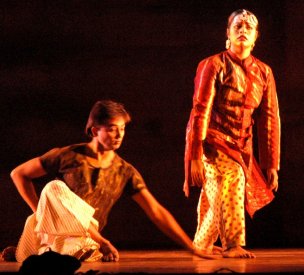 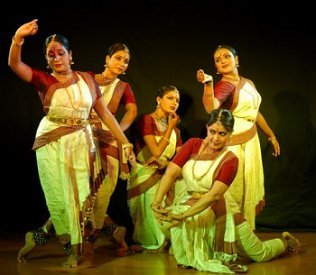 Of course, there are many other artistes who have attempted fusion successfully. The earliest example is that of Rukmini Devi who used Kerala's martial art of kalaripayattu in the battle scene in Meenakshi Kalyanam in her Kalakshetra production. Uday Shankar was another pioneer. More recently, Ananda Shankar Jayant presented a programme entitled 'Navarasa - Expressions of Life' in Mumbai that was BN-based but included a little bit of other styles including the Western ballet-like quick lifting of the nayika by the nayaka in one movement representing sringara rasa. It all blended well. (narthaki.com/info/rev09/rev814.html). If shades of Malkauns are used imaginatively in the depiction of Hindolam, it is fusion done in a tasteful way enhancing the rasanubhava of the rasika. One can use a culinary analogy. In the South Indian dish of avial, a mix of vegetables, each stands out separately without meshing with the others, the only common element being the gravy (sruti and tala in the instant case) in which they are cooked. On the other hand, in the masala or curry powder, all the ingredients of spices and condiments are mixed in a manner that their individual identities are completely swamped by the total effect. Jugalbandi is like avial and fusion is akin to masala powder. Unfortunately these two terms have acquired pejorative overtones in popular usage. For this writer, the analogy is appropriate for explanation and the words have to be understood in a neutral sense. Art cannot develop and flourish if it is cribbed, cabined and confined to its traditional moorings. Only flowing water remains clean; otherwise it becomes a stagnant pool. There would have been no Ramayana if Sita had not crossed the Lakshman Rekha! Neo-Classical dance Under Neo-Classical dancing, I would include dance dramas and thematic dancing besides jugalbandi, already discussed. Some of them take advantage of technical advances in entertainment. 'Sri Venkatadri Vaibhavam,' a multilingual, multimedia dance feature on Sri Venkateswara, Lord of the Seven Hills, was choreographed and presented by Krishnakumari Narendran, at Sri Shanmukhananda Fine Arts and Sangeetha Sabha, Mumbai, a few years ago. It took the audience to Tirupati giving a personal experience of being present on the Seven Hills, witnessing the rituals and festivals and worshipping the Lord. Buddhavatara, performed in Chennai, Mumbai and Singapore, featuring members of the Kanaka Sabha Centre for Performing Arts, Mumbai, and Singapore dancers of Chinese origin was a monumental inter-cultural effort involving a large number of artistes that called for choreographic skills and coordination of a high order on the part of Siri Rama, Director of the Sabha. 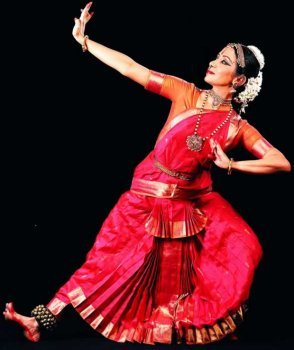 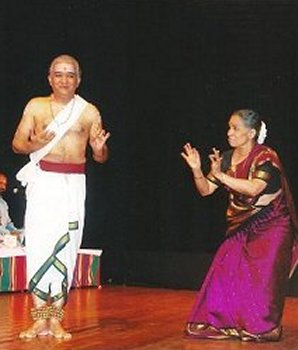 Thematic dancing would include performances like Shakti Prabhavam and Bhakti Pravaham of Dhananjayan. In such dance dramas, there is no compromise with the tenets of Natya Sastra. All the essential features like adavus, mudras, etc., are preserved and presented in the traditional way. There are some artistes who bring in the Margam format indirectly in thematic dancing. A good example is Alarmel Valli dancing with the poems of Tamil Sangam as the basis. Right from the soushtava sthanaka at the beginning, it was Pandanallur at its best. What is more, it incorporated all the elements of Margam. The opening item had Pushpanjali (obeisance to sun) and Jatiswaram (dancing to swaras and jatis), followed by the other elements of Margam ending with a Tillana, although they were not called so. In the review of her earlier programme at NCPA in 2008, this writer described how she had interwoven the standard elements of Margam into a theme-based dance. (narthaki.com/info/rev08/rev644.html). Modern Dance Modern Dance is a new genre that includes fusion also, already referred to. It involves ordered and aesthetic movements that convey a concept although they may not follow the Natya Sastra. Uday Shankar is widely considered as the father of modern dance in India. His film 'Kalpana' was a classic although it did not succeed at the box office. There have been two strands in the fusion of dance styles in India. One is to dance to Western melodies in one's own medium. The other is to mix two or more styles. This writer has seen Astad Deboo dancing to the Gregorian Chants and Daksha Sheth to Vivaldi, each one of which has its own charm to the lay viewer. Padma Subrahmanyam choreographed Jatayu Moksham to the strains of Tchaikovsky's Overture to Romeo and Juliet. As she explained at a dance symposium in Mumbai a few years ago, she had not followed the strict grammar of Bharatanatyam but had adopted a free approach to movements which were no doubt graceful. She herself pointed out to the audience that while the chari-s were taken from Bharatanatyam, they were not strictly bound by the rules of rhythm and, in some places, there was no tala at all. However, this writer found it of absorbing interest as a visual experience. (For the record, it should be noted that Padma Subrahmanyam calls her style as "Bharatanrityam".)  Anita Ratnam is another avant-garde artiste who has completely switched over to modern and thematic dances. In her Poems for the Eye, based on Tamil Sangam poetry, which cannot be easily set to ragas and talas, she chose to have the verses spoken and used instrumental music and swaras as complements. As she once said, today's group dynamics needs a system of training different from the one for solo performance. Awareness of space, confidence of the body as a painter drawing on a blank canvas and a shift from the obsession with the centre as the primary focus all need a totally revamped methodology. The trend has gained strength due to the migration of Indian artistes to the West where they have opportunities for interaction with those of other cultures and have the necessary facilities and encouragement in the form of funding from local art councils to try new ideas. They are appreciated by the audience which perhaps wants something new away from the beaten track. Similar experiments have come to be attempted in the field of music too. A vocalist who renders the Carnatic Hindolam with flashes of Hindustani Malkauns is also attempting fusion. The other trend is the combination of Western and Indian music. Ravi Shankar and the Beatles and the Shakti group featuring Western, Hindustani and the Carnatic instruments are good examples of this genre. What is heart warming is that some of the modern dancers are utilizing their talents and time for worthy causes. There are many but I would like to comment on one with whose work I am familiar. Astad Deboo A good example of a choreographer whose productions have linear and geometrical patterns that are visually appealing is Astad Deboo, the maestro of modern dance. I saw his 'Breaking Boundaries' on October 1, 2009 at the NCPA. There is no limit to his ingenuity. Sometime back, he had trained hearing-handicapped children to perform dances by feeling the vibrations on the floor. He took the help of Salaam Balak Trust in New Delhi, which is engaged in the noble task of sheltering and rehabilitating street children to become useful and responsible citizens of society. After a selection procedure he could assemble a group of 13, aged 13 to 24, and train them. As he said: “Only two have some knowledge of Kathakali and Chhau. For the rest it was just Bollywood.” As in the case of any new guru taking over in the fields of music and dance, he had to deprogram them and make the children unlearn the Bollywood movements, the jhatkas and matkas and inculcate the rasas and the mudras in them. The training consisted in making them discover their bodies and the potential for aesthetic movements in space and time. There was an intense period of training extending over several months. He had to interrupt his programme with the children whenever he had other engagements to fulfil. But then he was fortunate to have trained two of his students to take charge in his absence and practise what had already been taught so that when he returned he could resume his course seamlessly. He took the children to see some contemporary dances of other artistes with whom they could have discussions to widen their horizons. Just as in music a pause is pregnant with meaning, there are occasions for a dancer to remain motionless for a couple of minutes. After one such standstill, a student asked him: “Kya, yeh bhi dance hai?” (“What, is this also dance?'). As the training progressed the children came to understand the significance of movements and their enthusiasm grew.  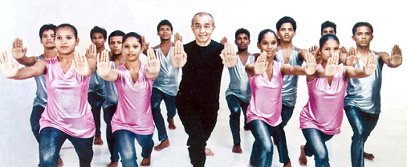 Whither Margam? The question needs to be answered by dancers, teachers and rasikas. Do we want Margam to go through motions of slow death? No doubt there are still a few brave souls sticking to the format but generally from what one sees on the stage and in the press, they are exceptions. The casualty is the decline of the nattuvanar as the conductor of the dance programme. He has become a member of the orchestra, often instructed by students on his role! Does not Margam have an intrinsic worth to be preserved? Is it not time to restore the nattuvanar to his rightful place in the scheme of things? ('The rise and fall of the Nattuvanar' in Shanmukha, April-June 2008, reproduced in narthaki.com, (narthaki.com/info/articles/art234.html) From all the available materials on the subject it would appear that no one questions the importance and relevance of Margam for training a dancer. Then the further question arises. Why should one undergo a rigorous training of 7 to 10 years either with a guru or in an institution if, for all practical purposes, eventually one is going to unlearn all that is learnt and branch off into esoteric forms of dancing? Is it also not a form of brain drain? Is the long training only for the purpose of doing the arangetram? Of course, we have cases of students of engineering, electronics, medicine, etc., taking to music and dance after obtaining post-graduate degrees. It is also a waste of society's scarce resources and the unproductive use of the subsidy provided by government for such costly education. Here the problem is lack of career guidance. When I was young, the only professional opening that was supposed to be good for bright students was either engineering or medicine. Otherwise, education was meant to produce clerks for the British colonial administration. In a way it was true because of the undeveloped nature of the economy. But today the situation is different. The employment and entrepreneurial possibilities, either in India or abroad, are practically unlimited. It is necessary for parents to identify the talents of their children at an early stage and encourage them to pursue their interests. While certainly the rasika can have what I call a cafeteria approach choosing what he wants, there is a responsibility devolving on the aficionados of BN that the rich legacy of Margam is not lost for ever. My appeal to leading dancers is: "Please continue to do whatever you are good at. But at the same time, present a few programmes based on Margam once in a while to keep it alive.” At the same time, institutions teaching BN should incorporate in their syllabus, elements of modern dance in which students could specialize later in an advanced programme, if they wish. There is also a case for including dancing and choreography for films in the syllabus as optional as it is a lucrative field and there are not many qualified artistes therein. This field is not generally recognised by organizers of classical dance seminars. It is a good sign of the changing times that the Natya Kala Conference 2009 in Chennai had arranged a lecture demonstration by Saroj Khan, a leading choreographer and teacher of dancing in films. Her lessons in this field on a TV channel are watched by many aspirants for this art form. While a return to raja margam (royal path) is called for, we cannot resist the changes brought about by time. As a Tamil verse says: “It is the inevitability of time to drop the old and bring in the new.” Don't be surprised, if, after a few years, you have fusion and modern dance at Natyanjali festival in Chidambaram and other places! The author, an Economic Consultant in Mumbai, is a music and dance buff. |